When people think of large birds, they’re probably picturing the Ostrich or the Emu, which are flightless birds. It may be hard to believe but some of the largest living birds overall (by weight) in the world can actually fly. All of the flying birds on this list can reach up to at least 26 lbs, with the largest weighing over 40 lbs! In addition to being some of the heaviest flying birds in the world, many of the birds on this list have some of the largest wingspans in the world.
-
Wandering Albatross
Wingspan: 10 ft 2 in – 12 ft 2 in (3.1 – 3.7 m)
Range: South Georgia Island, Crozet Islands, Kerguelen Islands, Prince Edward Islands, and Macquarie Island, off the Kaikoura Peninsula on the east coast of the south island of New Zealand
Scientific Name: Diomedea exulans
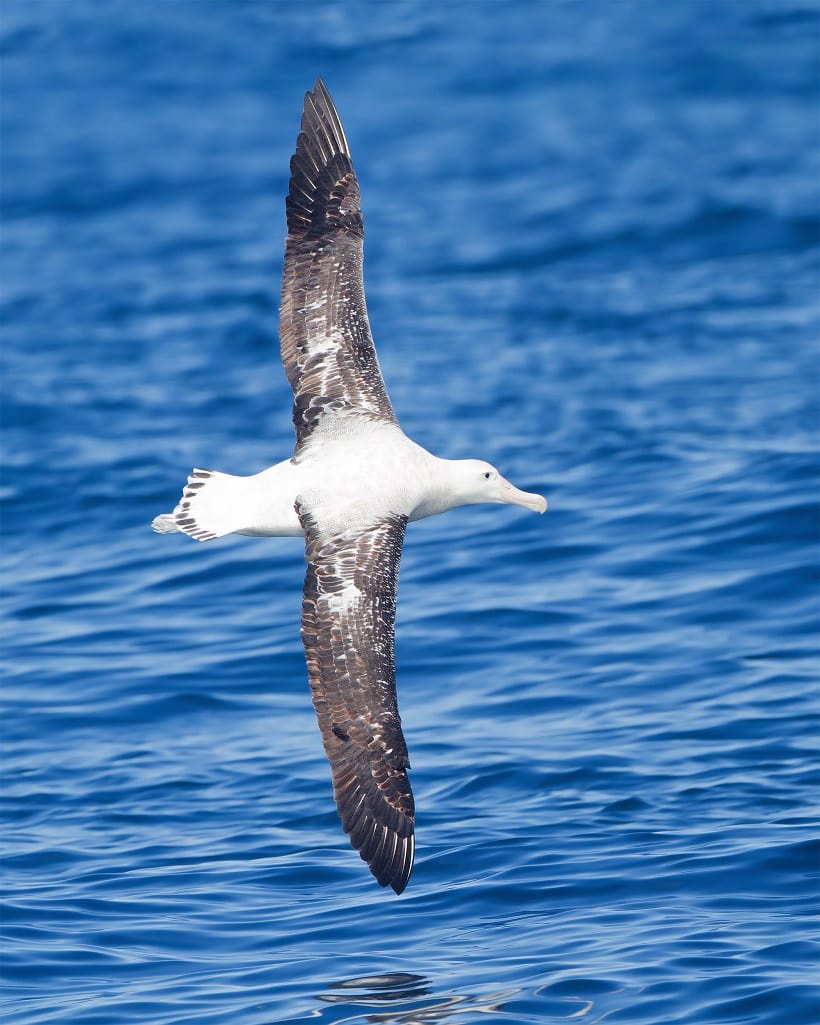
Source: Wikimedia Commons via JJ Harrison
While the Wandering Albatross may not be the largest bird on this list by weight, it is known for having the largest wingspan of any living bird. Wandering Albatross range in size from 13.2 – 26.5 lbs (6 – 12 kg) and have an average wingspan of 10 ft 2 in (3.1 m). Their wingspans can reach over 3.5 m (about 11.5 ft) and the record wingspan on a Wandering Albatross was recorded at 12 ft 2 in (3.7 m).
Did You Know?
The Wandering Albatross is a vulnerable species and it is estimated that there are only between 25,000 – 26,000 adults left in the wild.
-
Eurasian Black Vulture
Wingspan: 8 ft 2 in–10 ft 2 in (2.5 – 3.1 m)
Range: Across southern Europe and Asia from Span to Korea
Scientific Name: Aegypius monachus
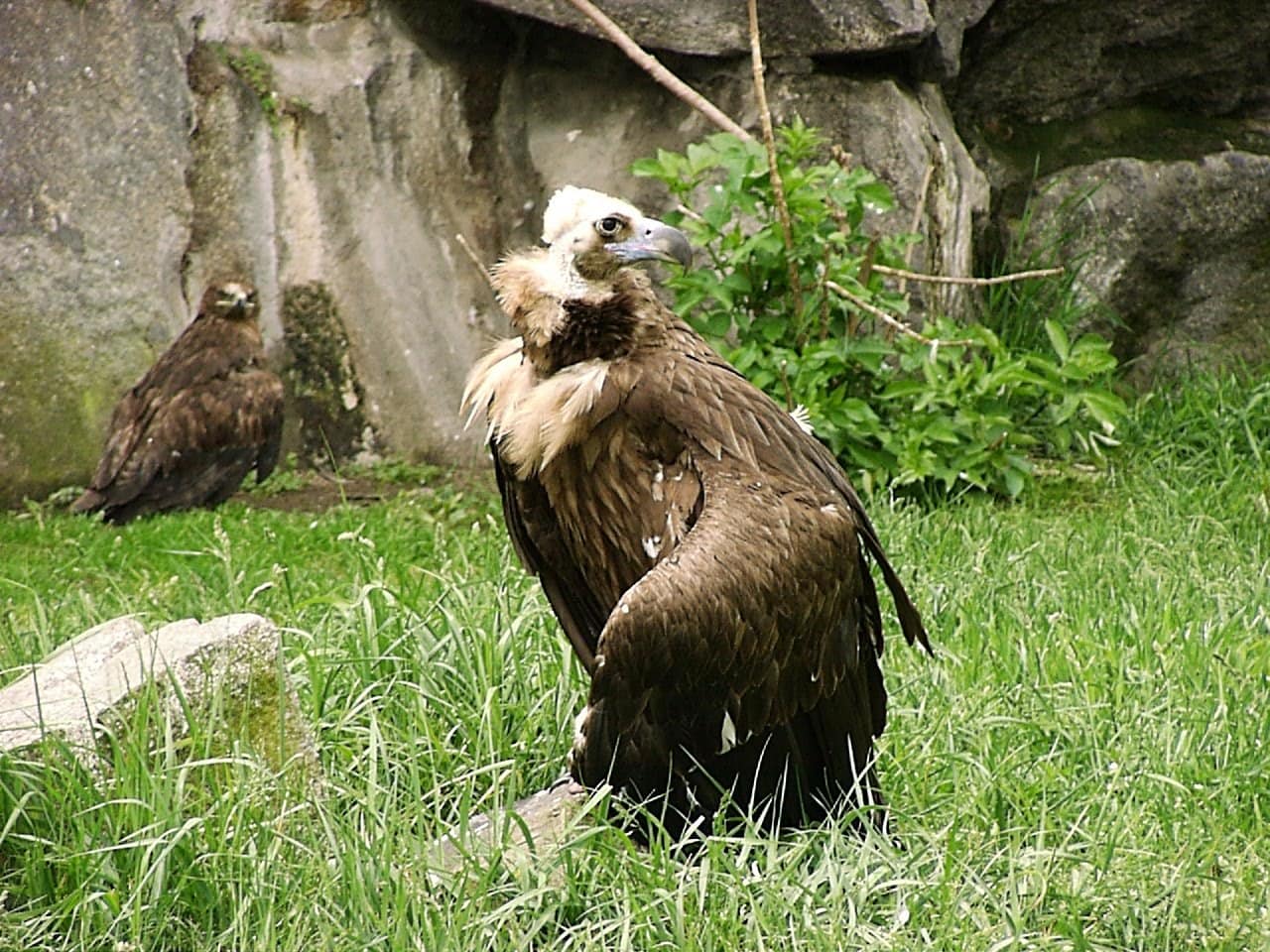
Source: Wikimedia Commons via Sebastian Wallroth
The Eurasian Black Vulture (also called the Cinereous Vulture, Black Vulture, or Monk Vulture) is the second largest bird of prey in the world, after the Andean Condor. Unlike the other large flying birds on this list, the female Eurasian Black Vultures are larger than the males. Female Eurasian Black Vultures can range in size from 17 – 31 lbs (7.5 – 14 kg), while the males are about 14 – 25 lbs (6.3 – 11.5 kg).
As its name suggests, the Eurasian Black Vulture is native to parts of Europe and Asia. The Eurasian Black Vulture population is decreasing and it is listed as a Near Threatened species on the IUCN Red List.
Did You Know?
The Eurasian Black Vulture has specialized hemoglobin that allows it to efficiently take in oxygen while it flies at high altitudes.
-
Whooper Swan
Wingspan: 6 ft 3 in – 9 ft (2.05 – 2.75 m)
Range: southern Europe and eastern Asia
Scientific Name: Cygnus cygnus
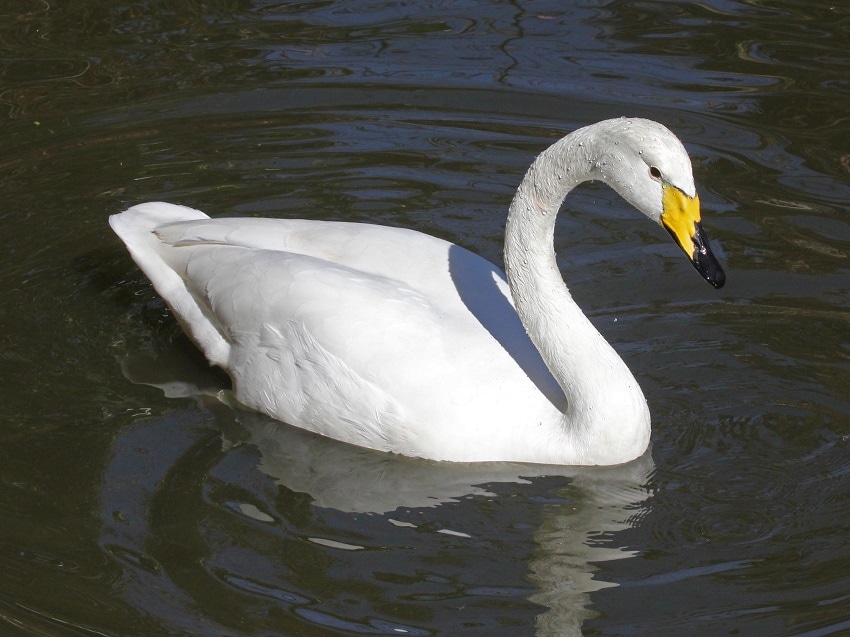
Source: Wikimedia Commons via DickDaniels
The Whooper Swan is closely related to the North American Trumpeter Swan. However, the Whooper Swan isn’t quite as big with adults weighing between 16 – 31 lbs (7.4 – 14 kg). Whooper Swans are native to southern Europe and eastern Asia. Sometimes Whooper Swans migrate as far as western Alaska.
Whooper Swans come to UK from Iceland during the winter months to nest in estuaries and wetlands. When it’s time to return home in the spring, Whooper Swans will fly non-stop from the UK back to Iceland.
Did You Know?
The yellow markings on the Whooper Swan’s bill is unique to each individual, just like human fingerprints.
-
Andean Condor
Wingspan: 8 ft 10 in to 10 ft 6 in (2.7 – 3.2 m)
Range: Throughout the Andes of South America
Scientific Name: Vulture gryphus
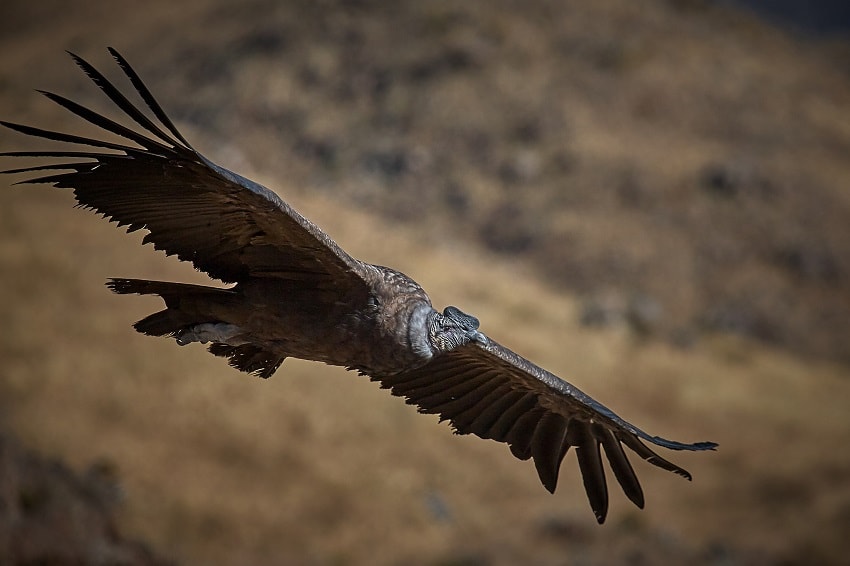
Source: Flickr via Pedro Szekely
The Andean Condor is the world’s largest bird of prey with the males weighing up to 33 lbs (15 kg). Besides being extremely heavy, Andean Condors have one of the widest wingspans, ranging from 8 ft 10 in to 10 ft 6 in (2.7 – 3.2 m).
As their name implies, Andean Condors are native to the Andes Mountains in South America. However, they also live near the coasts and even the deserts in the region. The Andean Condor was added to the Endangered Species List in 1973, but has made a bit of a comeback through conservation efforts.
Did You Know?
The Andean Condor is one of the longest living birds in the world with lifespan between 60 – 100 years.
-
Dalmatian Pelican
Wingspan: 8 ft – 11 ft 6 in (2.45 – 3.51 m)
Range: southeastern Europe and east-central Asia
Scientific Name: Pelecanus crispus
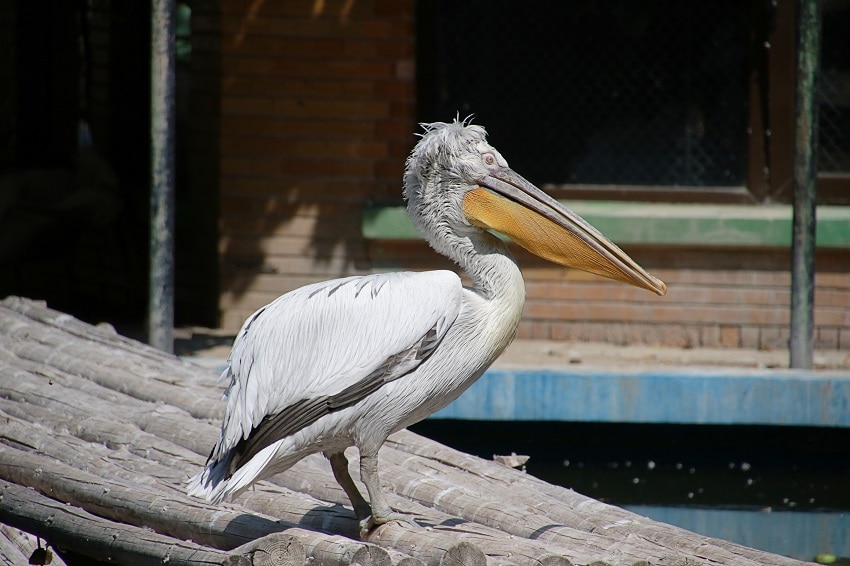
Source: Wikimedia Commons via Alexandru Panoiu
While some male bustards and swans can be larger, on average the Dalmatian Pelican is considered the largest/heaviest flying bird in the world across both males and females. Adult Dalmatian Pelicans weigh between 16 – 33.1 lbs (7.25 – 15 kg) and have a wingspan of 8 ft – 11 ft 6 in (2.45 – 3.51 m).
Dalmatian Pelicans breed across southeastern Europe through east-central Asia. Like other species of pelicans, the Dalmatian Pelican population has declined over the years and IUCN Red List considers the Dalmatian Pelican to be Near Threatened.
Did You Know?
Dalmatian Pelicans stay with the same mate for a breeding season, not for life.
-
Mute Swan
Wingspan: 6 ft 7 in – 7ft 10 in (2 – 2.4 m)
Range: Temperate areas of Europe to western Asia; migrates as far south to North Africa and the Mediterranean
Scientific Name: Cygnus olor
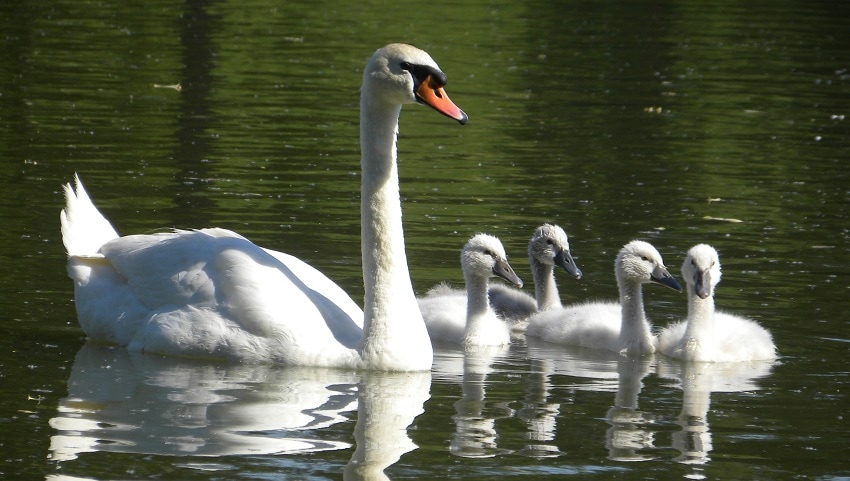
Source: Wikimedia Commons via Trachemys
The Mute Swan is one of the largest waterfowls in the world with males weighing up to 32 lbs (14.3 kg). Mute Swans are considered the second largest swan species after the Trumpeter Swan. In addition to being quite heavy, mute swans have a wingspan ranging from 79 – 94 in (2 – 2.4).
Although Mute Swans are common in North America, they are not native to the area and actually come from Europe. In fact, all Mute Swans in North America are descended from swans brought over from Europe in the mid 1800s through the early 1900s.
Did You Know?
The titular character of Hans Christian Andersen’s fairy tale The Ugly Duckling was a young Mute Swan.
-
Trumpeter Swan
Wingspan: 6 ft 1 in to 8 ft 2 in (1.85 – 2.5 m)
Range: Alaska, Canada, and the northwestern United States
Scientific Name: Cygnus buccinator
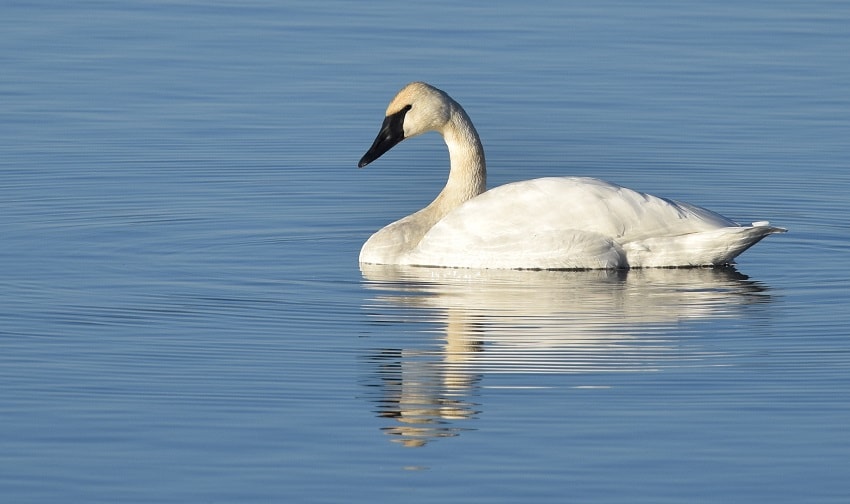
Source: Wikimedia Commons via Andy Reago and Chrissy McClarren
The Trumpeter Swan is the largest flying bird native to North America and the largest waterfowl in the world. Adult Trumpeter Swans often weigh at least 20 lbs (9.07 kg) and males can reach over 30 lbs (13.6 kg).
Trumpeter Swans are not only heavy, they also have massive wingspans ranging from 6 ft 1 in to 8 ft 2 in (1.85 – 2.5 m). In the past, Trumpeter Swans nested all over North America, but their numbers declined as more people settled on across the continent. Today Trumpeter Swans are primarily located in remote parts of Alaska, Canada, and the northwestern United States.
Did You Know?
Since Trumpeter Swans are so large, they need at least 100 meters (328.1 ft) of space to take flight.
-
Kori Bustard
Wingspan: 7 ft 7 in – 9 ft 0 in (2.3 – 2.75 m)
Range: Southern Africa; common in Botswana, Namibia, southern Angola, and southwestern Zambia
Scientific Name: Ardeotis kori
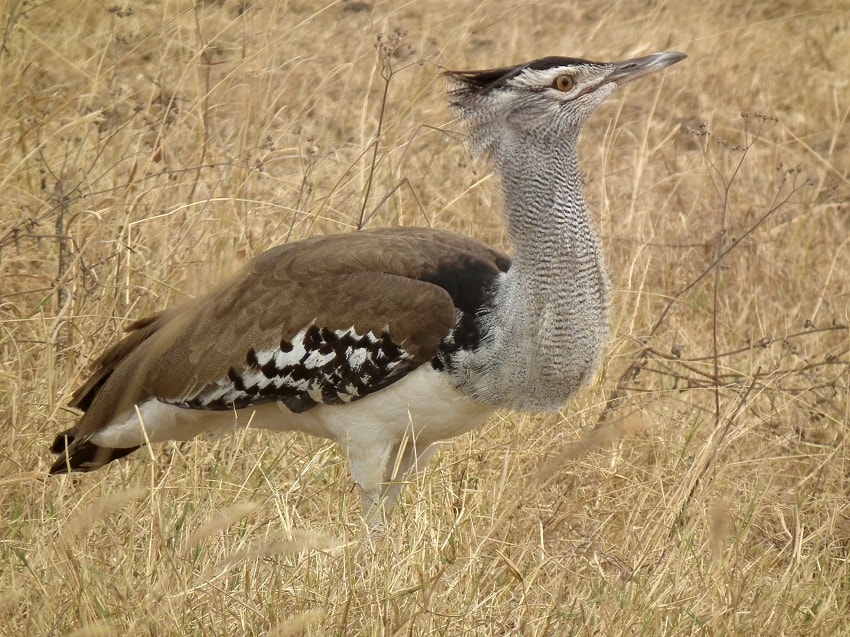
Source: Wikimedia Commons via Nevit Dilmen
Right behind the Great Bustard in size, is the related Kori Bustard, which is native to southern Africa. Kori Bustard males can weigh between 24 – 42 lbs (11 – 19 kg) and female Kori Bustards are about half that size.
The Kori Bustard is Africa’s heaviest flying bird. Although Kori Bustards can fly, because of their large size, they prefer dwell on the ground. Kori Bustards only fly when its in serious danger.
Did You Know?
During mating season, male Kori Bustards can inflate their esophagus to as much as four times its normal size.
-
Great Bustard
Wingspan: 6 ft 11 in – 8 ft 10 in (2.1 – 2.7 m)
Range: Across Europe; more than half in Spain; subspecies in Asia
Scientific Name: Otis tarda
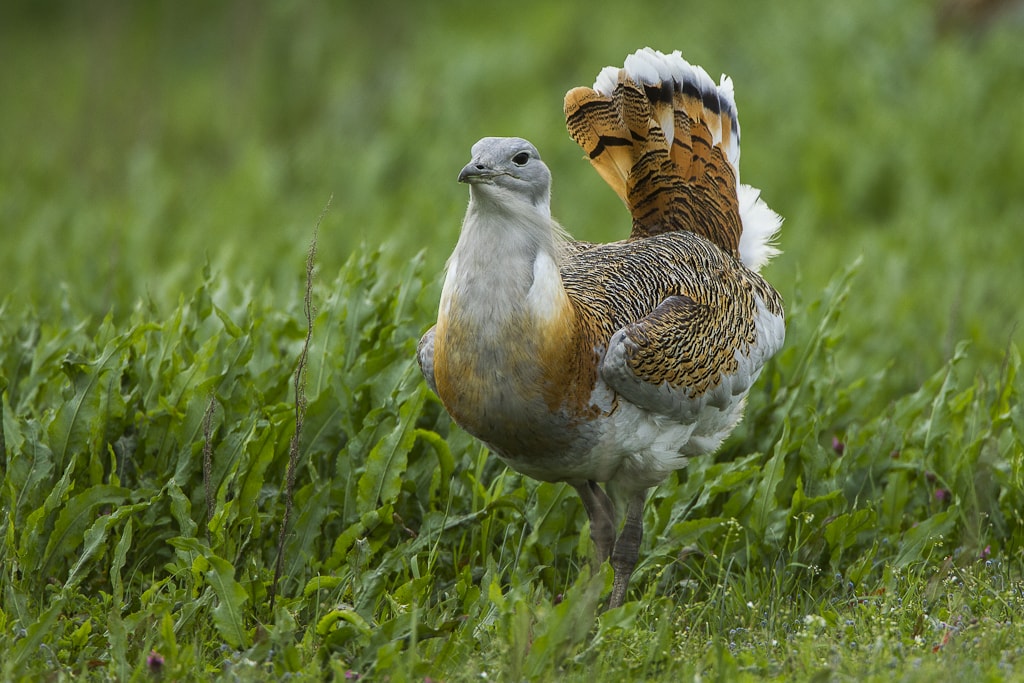
Source: Flickr via Francesco Veronesi
The Great Bustard is the largest flying bird in the world with males regularly weighing over 40 lbs (18 kg). The heaviest male Great Bustard ever recorded was 46 lbs (21 kg)! While male Great Bustards are massive, the females are about 30 – 50% smaller.
Great Bustards are native to Europe and there is a relatively unknown subspecies in Asia as well. Unfortunately, the Great Bustard is listed as a vulnerable species and its numbers have declined in many countries.
Did You Know?
The Great Bustard was native to the United Kingdom, but was wiped out in the 1830s by trophy hunters. However, the UK’s Great Bustard population has recovered a bit in recent years.
